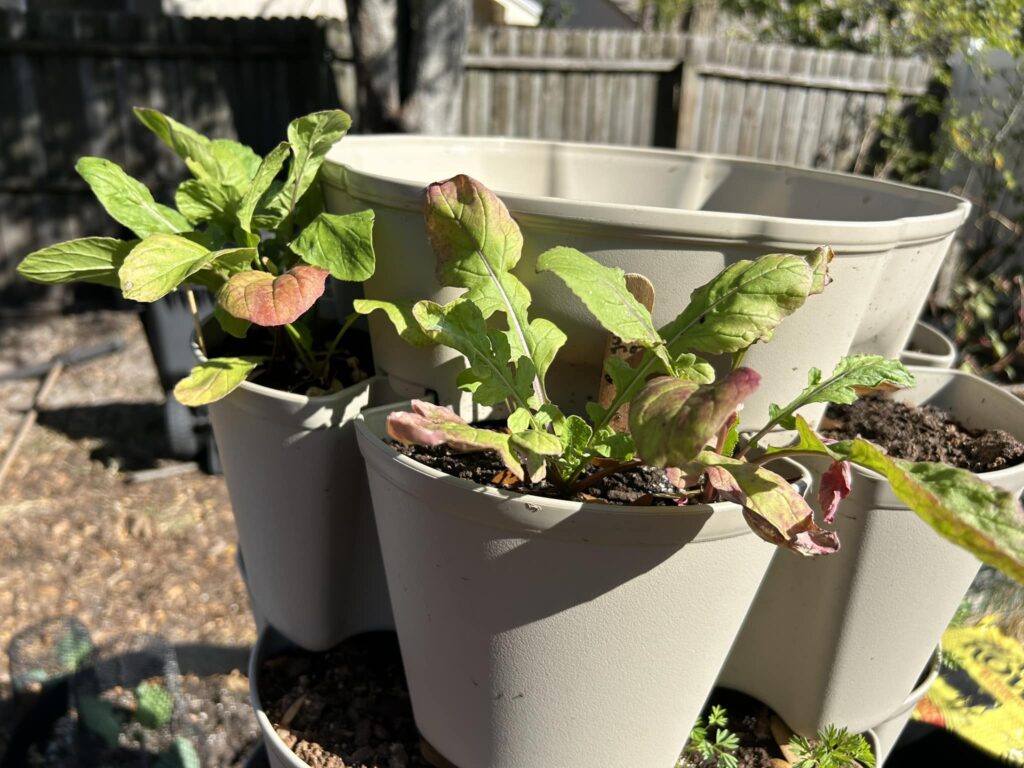

Arugula, a beloved leafy green with a peppery flavor, is a favorite among gardeners and chefs alike. It’s not uncommon to see your once-vibrant arugula leaves turning an unusual purple hue. This shift in color may seem alarming, but understanding the causes can help restore your plants to health. In this article, I have explained the causes and treatment for purple leaves on the Argula plant.
A purple discoloration in arugula is often linked to phosphorus deficiency. Phosphorus plays a crucial role in the energy transfer within plants, helping with root development and overall plant vitality. When it’s lacking, plants struggle, and purple leaves are a tell-tale sign. Cold weather can exacerbate this issue, as plants have a harder time absorbing phosphorus when temperatures drop.
How to Treat It:
Cold Stress – Purple Leaves in Frosty Weather
Cold temperatures can often shock arugula plants, leading to purple leaves. Young plants or those exposed to sudden cold snaps are particularly susceptible.
How to Treat It:
Pests and Diseases – Hidden Causes of Purple Leaves
While not as common, certain pests or diseases can contribute to leaf discoloration. Aphids and other sucking pests can weaken arugula plants, causing nutrient imbalances. Purple leaves might also indicate fungal infections, especially if the discoloration is coupled with other symptoms like wilting or spots.
How to Treat It:
Sometimes, the purple color is simply a genetic trait. Some arugula varieties, especially those bred for cold tolerance or specific flavors, may naturally develop purplish hues in cooler temperatures or stress conditions.
How to Treat It:
Seeing your arugula leaves turn purple can be concerning, but with the right care and knowledge, it’s often an easy fix. Whether it’s adjusting your watering schedule, tweaking your soil nutrients, or shielding your plants from cold, a little attention can go a long way in bringing your arugula back to its vibrant green self.
If you’re dedicated to your garden’s health, you’ll soon be harvesting perfect leaves once again!
I hope, this solution be helpful to you…